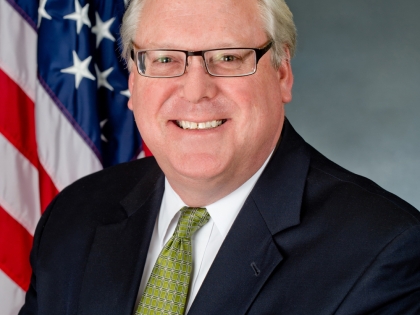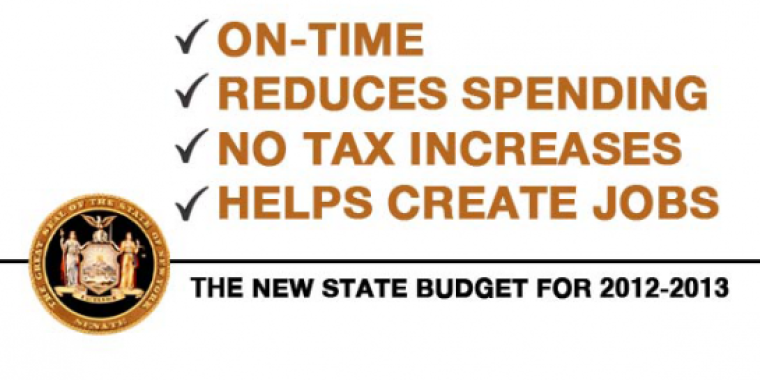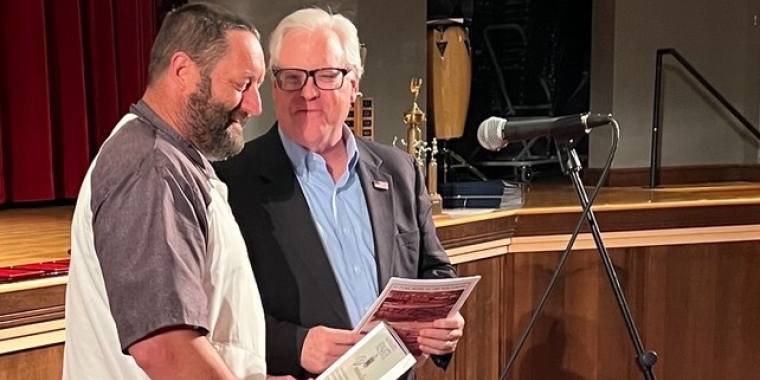
The 2012-2013 New York State Budget
Thomas F. O'Mara
March 30, 2012
-
ISSUE:
- Budget

The 2012-2013 New York State budget was enacted on Friday, March 30, 2012.
While the annual budget adoption marks the most signficant action of each and every legislative session, the regular session of the 2012 Legislature is scheduled to continue until the end of June -- meaning that many other issues are on tap for debate and discussion.
But the new budget represents the biggest news at the moment. You can find more analyses and additional details on the final 2012-2013 New York State budget from:
-- the New York State Division of the Budget
-- the Office of Governor Andrew M. Cuomo
-- the New York State Senate Majority
Many advocacy groups and other organizations have already weighed in with their reactions to this year's budget, including:
-- the New York State Association of Counties
-- the New York State School Boards Association
-- the Business Council of New York
-- New York League of Conservation Voters
-- New York State United Teachers
-- Unshackle Upstate
Read Senator O'Mara's March 30 budget statement in its entirety below:
Albany, N.Y., March 30—State Senator Tom O’Mara (R-C, Big Flats) said today that the 2012-2013 state budget being given final approval today by the Senate and Assembly will be noteworthy for its timeliness and for its commitment to upstate economic growth.
Overall, O’Mara said the budget continues key priorities to exert long-term control over future state spending and for meeting the state’s current fiscal obligations and challenges without resorting to new state borrowing or any new or higher state taxes or fees. For the second straight year, it includes a year-to-year total spending decrease and an ongoing realignment and revamping of many state programs and services.
And it’s also being adopted ahead of the April 1 start of New York’s new fiscal year on Sunday.
“Not long ago, the possibility for the New York State budget to be adopted on time, let alone early, would have been the longest of long shots,” said O’Mara. “It’s important that the past two years have produced on-time state budgets and actions that put the brakes on runaway spending and higher taxes, and that signal a future of spending control, tax relief and private-sector job growth. It’s important that the past two years, even in the face of deficits and a nationwide economic crisis, have produced fiscal reforms and a stronger commitment to upstate economic growth and other fundamental priorities. There’s more we need to do and we’re going to keep at it. But we’re moving in the right direction.”
As highlights of the new budget, O’Mara pointed to a comprehensive “New York Works” program to undertake road and bridge projects statewide and create thousands of jobs, a second round of funding to support economic development strategies developed by New York’s 10 Regional Economic Development Councils, including the Southern Tier and Finger Lakes regions, and the largest-ever program to enhance state parks.
“Without strong and steady economic growth, especially upstate, we will never be able to achieve long-term property tax relief or any of the other fundamental priorities that we’re working toward. So this year’s budget focuses on economic growth as the beginning of a broader and stronger turnaround in New York,” said O’Mara, noting that he and his Senate colleagues will continue to push for a plan they proposed earlier this year to strengthen the state’s economic competitiveness and improve New York’s business climate through a broad strategy involving significant tax relief, much of it aimed at private-sector job creation, and fiscal responsibility and spending control across state government – including a 2% cap on future state spending growth.
In addition to economic development, O’Mara said the new state budget will also begin a state takeover of local Medicaid cost increases beginning next year with a full freeze in effect by 2015. Under the plan, counties will save $1.2 billion in Medicaid costs over the next five years.
“This new budget commits to a true turnaround in the state-local partnership and long-term relief for local property taxpayers,” said O’Mara. “It puts in motion a stronger state commitment to getting counties and property taxpayers out from under the burden of Medicaid, the single-largest unfunded state mandate.”
O’Mara said that while relief from Medicaid costs is the most significant mandate relief action for counties and local property taxpayers, he expects additional mandate relief actions to be taken before the end of the current legislative session – especially following a set of recommendations forthcoming from the state’s Mandate Relief Council.
“We’re far from done on mandate relief, but this budget represents an important start,” said O’Mara.
Other budget highlights include:
-- the reallocation of $200 million to ensure a more direct, dedicated, effective, equitable, and fair distribution of state aid to low-wealth, rural and high-needs districts in an effort to achieve regional balance. O’Mara joined a bipartisan coalition of upstate legislators earlier this year to call for the reallocation. As a result, districts throughout O’Mara’s 53rd District will see an approximately $5.21 million increase over the governor’s original proposal. Overall, high needs districts statewide are receiving 71% of the increase;
-- additional support for the state’s community colleges, including Corning Community College, Finger Lakes Community College, and Tompkins-Cortland Community College;
-- repealing last year’s changes to the Elderly Pharmaceutical Insurance Coverage (EPIC) program that took effect this January and eliminated EPIC subsidies for enrolled seniors before they reach the Medicaid D “doughnut hole” coverage gap. That change has required many seniors to pay 25% more for the cost of their drugs and resulted in significant cost increases. This year’s budget rolls back that change and will reduce copayments for seniors to a maximum of $20;
-- funding to assist local efforts to stop the spread of the invasive aquatic plant hydrilla, which was found last year in the Cayuga Inlet in Tompkins County, a serious threat to the environment and economy of the Finger Lakes, Great Lakes and Erie Canal regions;
-- all 11 of the state Department of Transportation’s (DOT) regional offices will stay open, including the Region 6 office in Hornell. This follows a Cuomo proposal earlier this year to reduce the number of DOT regional offices from 11 to 6. The DOT Region 6 office covers Allegany, Steuben, Chemung, Schuyler and Yates counties;
-- maintaining funding for the Consolidated Highway Improvement Program (CHIPS) and the Municipal Streets and Highways Program, which allocate the bulk of the state’s annual direct aid for local roads and bridges, at last year’s increased funding levels.
“The new budget renews and revitalizes New York’s commitment to long-term fiscal responsibility, tax relief and private-sector economic growth. One by one by one we’re checking off the achievements to prove it and to make it work,” said O’Mara. “The core proposals underpinning this fiscal strategy remain true to last year’s building blocks for getting state and local taxpayers out from under America’s highest tax burden, creating more cost-effective government across the board, and encouraging sustained private-sector job growth.”



